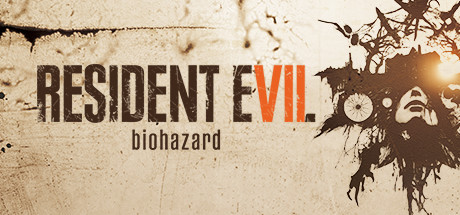“Resident Evil” as a franchise has been flooded with remakes in the past few years, such as “Resident Evil 2” in 2019, “Resident Evil 3” in 2020 and “Resident Evil 4” in 2023. Even though these are all great games, there is something special about new, creative takes on the franchise, with “Resident Evil 7: Biohazard” being the game that started off this new era for “Resident Evil.”
“Resident Evil 7: Biohazard,” released Jan. 24, 2017, is a survival-horror video game developed and published by Capcom. The player takes the role of Ethan Winters (Todd Soley), an average man who has received a voice message from his missing wife, Mia (Katie O’Hagan), who has been gone for three years. The game follows Ethan as he searches for his wife in a large Louisiana manor filled with horrific creatures.
“Resident Evil 7: Biohazard” was the first new “Resident Evil” game since “Resident Evil 6” in 2012. Between 2012-2017, there was a distinct lack of not only “Resident Evil” games but games by Capcom. The company was in a rough spot as the games they released were critical failures.
So, when “Resident Evil 7: Biohazard” released, it was not only a commercial and critical success for Capcom, but the start of their seven-year streak of making excellent video games again.
Louisiana house of horrors:
As the player takes control of Ethan Winters, they walk into a plantation house in Louisiana. When they enter the plantation, they quickly become trapped in one of the scariest settings in the “Resident Evil” franchise.
The Baker home is a perfect location for this game as it is very reminiscent of the house in the first “Resident Evil” game. With long, winding hallways and a messy, abandoned feel, this location is the perfect setting for the game that essentially revived the franchise.
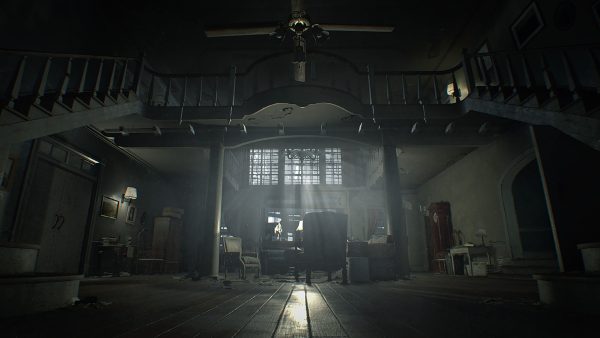
Of course, the setting is only as good as its ability to weave in gameplay. The house is laced with traps and puzzles, enough to keep the player on their toes. It’s classic “Resident Evil,” with a locked door needing multiple different arbitrary objects to unlock it, but it worked so well in the past, and it still works well in this game as it promotes exploration of this environment.
What really makes this setting is the use of the main antagonists of the game, the Baker family.
The Baker family is the face of this game, with each member having a different, twisted personality that the player must deal with. Jack Baker (Jack Brand) is a walking tank that the player is forced to run from the entire game. Marguerite Baker (Sara Coates) is a sick, twisted woman who attacks the players with swarms of bugs, which makes any player writhe in their skin. Lucas Baker (Jesse Pimentel) is the sick-minded son who likes to trick the player with traps and puzzles.
There are plenty of mechanisms in place to keep the player from progressing too far into the story too early. Despite the game being limited to the Baker’s house, there are a lot of tunnels to explore and a large part of the Baker property available to unlock.
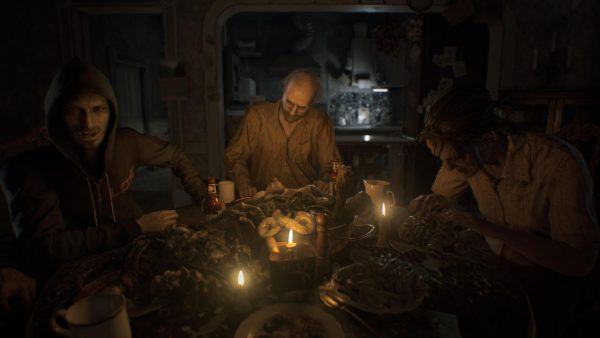
Each family member and their designated area adds to the game as each section of the house is dedicated to each member. So, not only do these members do a lot when it comes to setting and vibe, but they are also essential obstacles when it comes to combat.
“Resident Evil” goes first-person:
“Resident Evil 7: Biohazard” is the first game in the franchise that is in first-person, which means the player takes direct control of Ethan and sees exactly what he sees through his eyes.
This was a stark change for the franchise as the other “Resident Evil” games either take place in third-person with the camera following the player or with fixed camera controls. The first-person camera was a big risk as it could have alienated a lot of fans, but it works perfectly for this game.
Alongside the puzzle solving, a large portion of this game’s gameplay is its combat. Using guns, bombs and other weapons, the player will fight smaller enemies and larger bosses. Ammo is limited, along with other key items like herbs which you can use to make healing items.
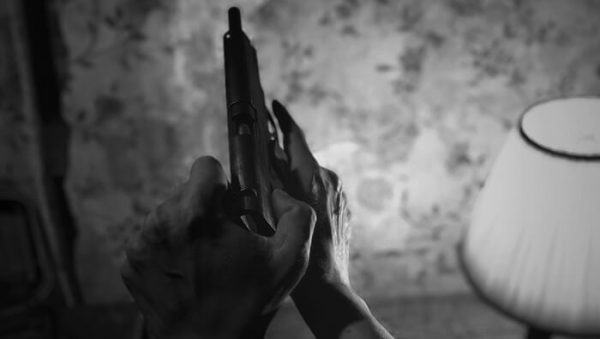
It’s a gameplay loop that “Resident Evil” has been using for decades, and it still works here. Knowing when to use your resources and how to use them is a constant thought process with every combat encounter, and it keeps the player engaged the entire time.
“Resident Evil 7: Biohazard” differs in gameplay and the general format of the game itself. Usually, in “Resident Evil” games, you aren’t typically hiding and trying to avoid enemies like most horror games. “Resident Evil 7: Biohazard” reverses your usual expectations, and you primarily have to hide or try your best to avoid enemies like the Baker family.
Extra content:
After the launch of “Resident Evil 7: Biohazard,” there were multiple different add-on minigames and separate stories that added a lot more replayability to the game.
The first separate story was “Not a Hero,” where you play as Chris Redfield (David Vaughn), a staple character in the “Resident Evil” franchise. The story follows Redfield trying to help track down Lucas Baker, who escaped at the end of the base game.
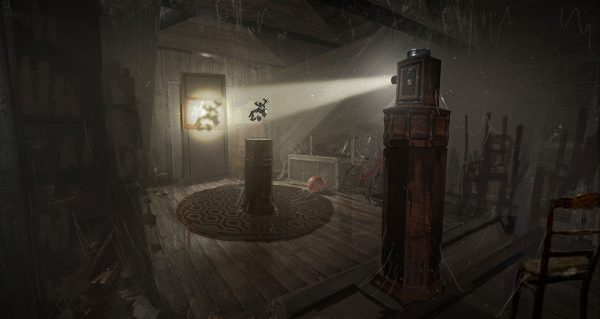
“Not a Hero” is a much more action-based experience, which is such a large change from the base game. The power fantasy the player has is liberating compared to the original game, as the player mows down the enemies they originally feared in the base game.
The other story added is “The End of Zoe,” where the player takes the role of Joe Baker (Gage Maverik), who is the brother of Jack Baker. Here, the gameplay is focused on survivalism and melee combat. This story is just another power fantasy where the player can sneak up on monsters and stealth kill them or just pummel them until they turn into black goo.
Other smaller game modes include an escape room, a round-based horde mode, a sinister version of blackjack and so much more.
Conclusion:
“Resident Evil 7: Biohazard” has had its critical success with glowing reviews from Polygon and PC Gamer, and it deserves it, but an aspect that gets left out is how this game started a new era for Capcom.
Since “Resident Evil 7: Biohazard” released, Capcom would go on to release “Monster Hunter: World,” multiple “Resident Evil” remakes, “Devil May Cry 6,” and other great games. It feels like “Resident Evil 7: Biohazard” gave Capcom enough confidence to really push themselves creatively and conceptually with their games, and it has been showing.
“Resident Evil 7: Biohazard” does not get enough recognition for both how it revived the “Resident Evil” franchise, how it revolutionized the gameplay for the franchise and how it started Capcom’s trend of releasing nothing but great games. I wholly recommend trying “Resident Evil 7: Biohazard” out for yourself as it still holds up as a fantastic game.







